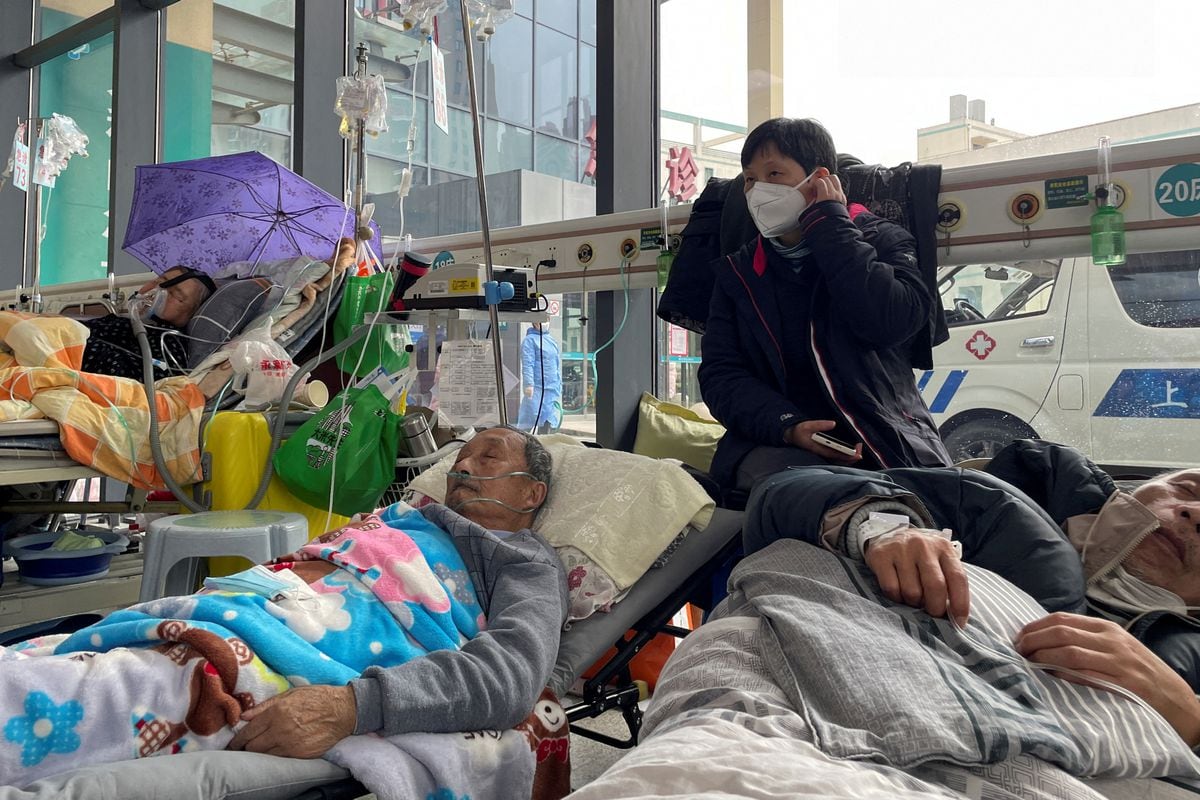In the epidemiological bulletin published this Thursday by the World Health Organization (WHO), China reports 218,019 infections and 648 deaths from covid, implausible figures to which neither the WHO, nor public health experts, nor the residents themselves in the country give no credit.
Among other things, because in December the minutes of a meeting of the Chinese National Health Commission were leaked, which estimated the infections for that month at 248 million, while less than 450,000 were reported to the international organization for the same dates: for every 550 infections, only one was counted.
The data published by the WHO also contains a factor of confusion: they include Taiwan and Hong Kong as part of the Asian giant, so many of the cases and most of the deaths that these statistics collect are not even officially reported by China. , but by these other States.
Since the tsunami of infections began, Beijing has only officially recognized 24 deaths from covid in mainland China, that is, less than one death per day since December 7, the date on which the Government terminated overnight the strict zero covid policy that had been in force for almost three years.
With 1,400 million inhabitants, it reports fewer deaths than Spain (still dozens every day), with 44 million and a much higher immunity to the disease achieved based on greater vaccination and the massive infections of the successive waves.
More information
Covid explosion in China: unknowns and certainties of a wave that worries the world
The statistics that the WHO publishes on China make so little sense, that according to them, in October there was a wave with more infections than the current one, and in May another of even greater dimensions.
This Thursday, the Chinese health authorities have reported a single death on the previous day, raising the official figure to 5,259.
The data contrasts with the images of full morgues and saturated hospitals that populate social networks, and with the information about crematoriums running non-stop.
But the country attributes the alarm to a Western media obsession.
The WHO has been asking China for greater transparency for weeks.
The last time, this Wednesday, when their spokespersons asked the authorities not to minimize the number of infections or deaths in order to have a true picture of what is happening.
the same variants
The Asian country was forced to make a 180-degree turn in its policy against the pandemic last month.
Until then, he maintained strict vigilance and restrictions to keep the country with minimal levels of infections.
While most of the world was already leading a practically normal life and fatality rates had dropped drastically thanks to vaccines, China was locked tight, with its citizens forced to comply with drastic isolations and quarantines in case of contagion.
This situation continued until the most contagious sublineages of the omicron variant entered the country.
With an unstoppable virus, the restrictions stopped working, the population took to the streets to protest and the Government opened its hand in an abrupt return to normality.
Although the variants circulating in the country are the same as in the rest of the world, China suddenly experienced an unprecedented explosion in a few weeks, in a population with almost no exposure to the disease and vaccination levels (especially in the elderly) much lower than those of Western countries, with some injections, moreover, less effective.
According to a report that the Chinese health authorities have shared this week with the WHO, 97.5% of all cases were caused by the BA.5.2 and BF.7 lineages, which had already been detected in countries like Spain.
The China Center for Disease Control has not reported any new variants.
The WHO has asked the authorities in Beijing to share more data and more sequencing in order to properly monitor possible mutations.
surge of infections
One of the first steps that China took after the 180-degree turn in its anti-pandemic policy was to change the criteria for what is considered a covid-related death: only those caused by pneumonia and respiratory failure in patients with the virus will be considered as such, which leaves out anyone who dies from another type of complication related to the disease.
For days, the country's capital has suffered a wave of infections that now seems to be subsiding.
The streets, ghostly a couple of weeks ago, have regained vitality, people have returned to restaurants, schools have reopened and the long avenues recover the traffic jams of employees returning to work.
Although health authorities such as the European Center for Disease Control have sent reassuring messages, ruling out for the moment that the outbreak in China could pose a threat abroad, some countries, such as Spain, have taken control measures at airports, something that on Wednesday recommended by the European Union, despite being controls that have not shown any effectiveness.















